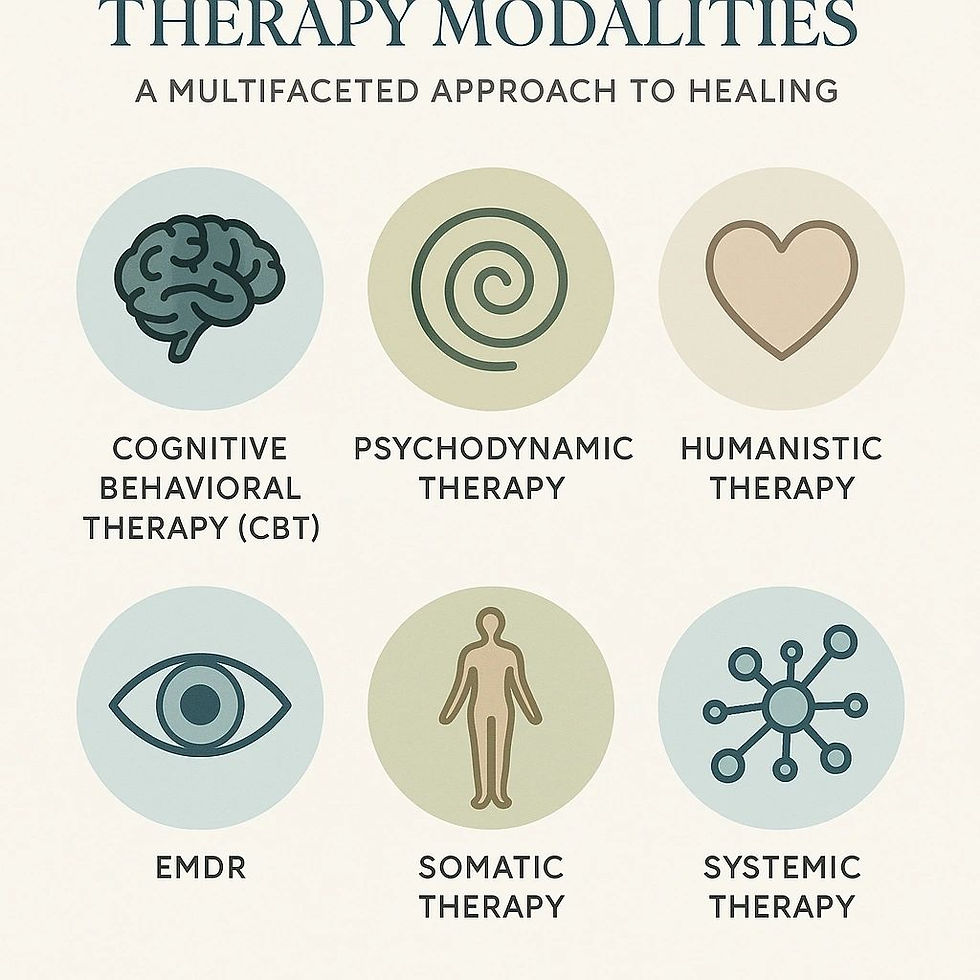Navigating Eating Disorders in the LGBTQ+ Community
- michelleluna
- Jun 18
- 4 min read

Eating disorders don’t discriminate—but the world often does. For many LGBTQ+ individuals, body image, identity, and mental health are deeply intertwined. The struggle with eating disorders like anorexia, bulimia, binge-eating disorder, and others isn’t just about food or appearance. It’s also about control, self-worth, trauma, and the complicated relationship between the body and how it's perceived.
While anyone can develop an eating disorder, LGBTQ+ folks are statistically more likely to experience them—often due to the unique stressors that come with navigating identity in a world that doesn't always affirm who they are. Whether you’re in recovery, just beginning to recognize your relationship with food and your body, or supporting someone you care about, this blog aims to shed light on the LGBTQ+ experience with eating disorders—and how healing is possible.
Why Eating Disorders Disproportionately Affect LGBTQ+ Individuals
Several studies show higher rates of disordered eating behaviors in LGBTQ+ communities, especially among transgender individuals and gay, lesbian, and bisexual youth.
Here’s why:
🧠 Minority Stress & Internalized Shame
Living with the chronic stress of discrimination, homophobia, transphobia, or family rejection can leave LGBTQ+ people feeling out of control or disconnected from their bodies. Eating disorders can sometimes develop as a coping mechanism—an attempt to manage pain or gain a sense of control.
💔 Body Dysphoria & Gender Identity
For many trans and nonbinary people, body dysphoria can make food and body image issues incredibly complicated. Disordered eating can sometimes be a way to suppress or change the body to align more closely (or avoid confronting) with gender identity—especially when access to gender-affirming care is limited.
🌍 Cultural Beauty Standards
Mainstream beauty ideals often don’t include queer and trans bodies. Gay men, for example, are frequently pressured to be lean and muscular. Lesbian women may face pressures both to conform to and reject conventional femininity. These conflicting messages can create confusion, self-judgment, and shame.
🧒🏽 Youth Vulnerability
LGBTQ+ youth are especially vulnerable. They may face bullying, social isolation, and family rejection—factors that significantly increase the risk of disordered eating, self-harm, and mental health challenges.
Recognizing the Signs
Eating disorders look different for everyone, but here are some signs to watch for:
Obsessive thoughts about food, weight, or body shape
Restricting or skipping meals
Bingeing or purging behaviors
Excessive exercising or rigid food rules
Avoiding eating around others
Dramatic weight changes (though not all eating disorders involve weight change)
Mood swings, anxiety, or withdrawal from social activities
Importantly, disordered eating isn't always visible. You don’t need to look a certain way to be struggling—or to deserve help.
Barriers to Support
While the need for treatment is high, LGBTQ+ individuals often face extra obstacles when it comes to getting care:
Lack of culturally competent providers who understand queer and trans experiences
Fear of discrimination or misgendering in treatment spaces
Healthcare bias, where concerns may be dismissed or wrongly attributed
Financial or geographic barriers to gender-affirming or inclusive care
This is why affirming care is so crucial. Healing is possible—but only when people feel safe enough to be fully seen and supported.
Healing in an LGBTQ+ Context
Recovery isn’t linear, and it certainly isn’t one-size-fits-all. But healing is possible, especially when it includes care that respects your identity. Here are some ways to navigate recovery:
🏳️🌈 Seek LGBTQ+ Affirming Treatment
Look for providers who specialize in eating disorders and understand LGBTQ+ identities. You deserve to be in a space where you don’t have to explain or defend your experience. Organizations like the National Eating Disorders Association (NEDA) and The Trevor Project offer directories and helplines to help you find inclusive support.
🧘🏽♂️ Rebuild Your Relationship With Your Body
This may look different for everyone. For some, it means learning to listen to your body again. For others, it means reconnecting with your body as a site of joy, power, and gender expression. Practices like intuitive eating, somatic therapy, and movement that feels good (not punishing) can support this journey.
🫶 Build a Chosen Community
You don’t have to go through this alone. Find people—friends, groups, online communities—who affirm you and your journey. Community can remind you that your body is not a problem to fix, but a home to care for.
🧠 Address Co-Occurring Mental Health Issues
Many LGBTQ+ people also deal with anxiety, depression, PTSD, or trauma—all of which can fuel disordered eating. Holistic care that addresses the full scope of your mental health is essential to recovery.
💬 Reclaim Your Narrative
You are not your diagnosis. You are not a failure for struggling. Your identity is not the cause of your pain—oppression is. Part of healing is learning to rewrite your story in a way that centers truth, compassion, and resilience.
Helpful Resources
You Are Not Alone
Eating disorders can feel isolating, but you don’t have to suffer in silence. Your pain is real—and so is your strength. As an LGBTQ+ individual, you’ve already survived a world that often misunderstands you. That same strength can carry you through recovery.
You are more than a body. You are more than a diagnosis. You are worthy of nourishment, peace, and love—just as you are.








Comments